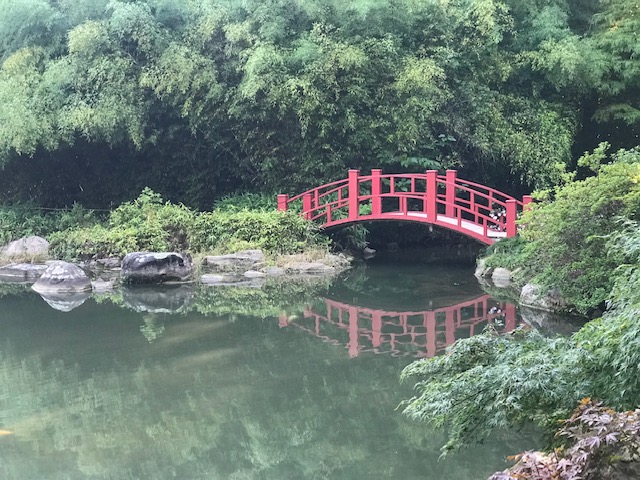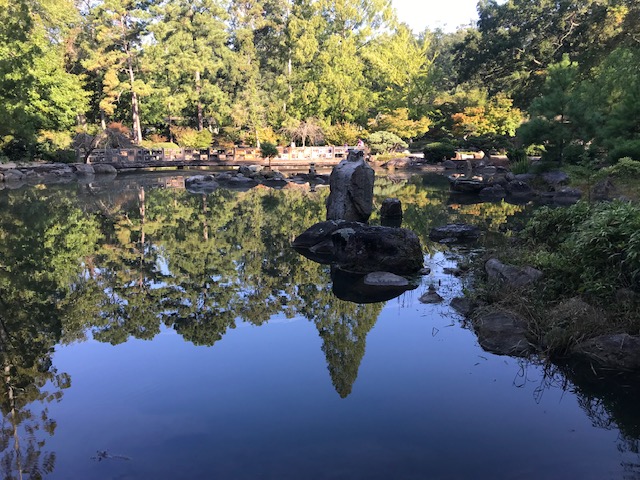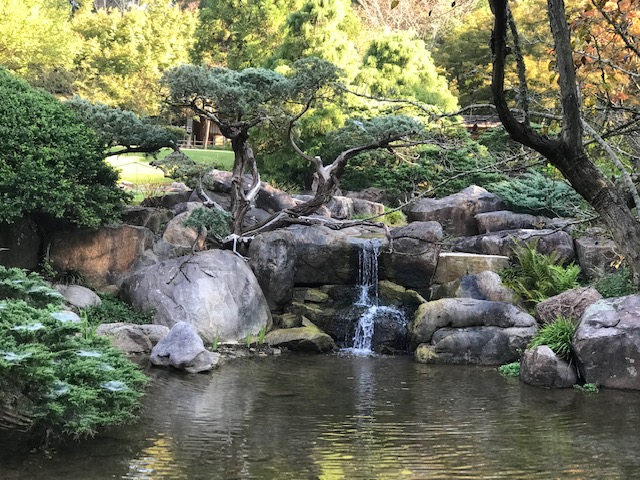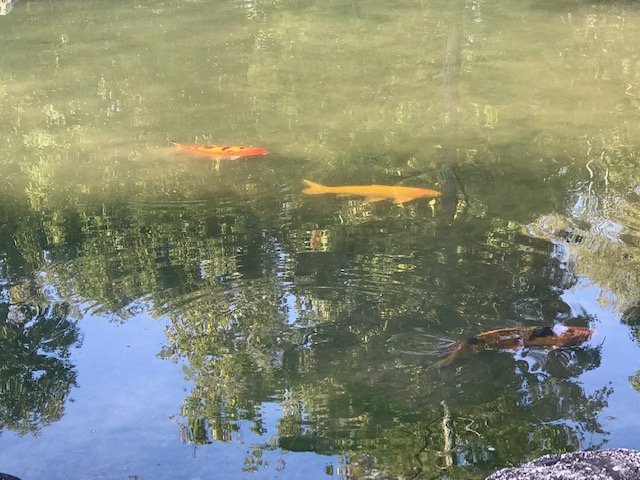
Rich and ancient symbolism is reflected in water in a Japanese garden. This bridge is called Moon Bridge, and the pond is Long Life Lake. Behind the bridge is a large magical bamboo forest with the branches sweeping down over the path. Japanese maple trees lean out over the pond.

The Bridge of Accomplishment in Long Life Lake “symbolizes the twists and turns one must successfully navigate throughout life and is also called the ‘zig-zag bridge,’ ” according to the Birmingham Botanical Gardens website. Designed for contemplation and reflection, water and bridges in Japanese gardens are outer symbols of the inner life, such as passages through time, space, emotion and personal transformation. Water is symbolic of cleansing, and contemplation of water can provide a context for spiritual renewal – more on the symbolism of gardens and how they can be used for contemplation here.

The water in this Japanese Garden flows through seven waterfalls and seven pools before it finds its way into Long Life Lake. There are three wooden and two stone bridges. It’s one thing to know that, and it’s another to actually find them all! The BBG tells us that “this numeration is based on the seven virtues of bushido, the way of the samurai; these are benevolence, courage, honesty, honor, loyalty, rectitude and respect.” In Japanese mythology, the number 7 is a lucky number reminding believers to remember the Seven Gods of Good Luck.

Known for swimming untiringly upstream and challenging waterfalls, the Koi represent good luck, prosperity, courage and perseverance. A legend tells the story of large numbers of Koi swimming upstream and trying to conquer a waterfall in the face of ridicule from local demons – one of the fish finally sprang up and over the falls, and the gods turned it into a golden dragon by way of reward for its strength and persistence. Fish symbolize abundance, faith and feminine symbols of fertility – more intriguing interpretations of the deep symbolism of fish and their watery domain here.